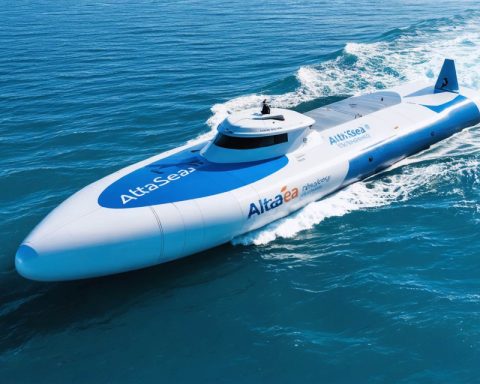- Hydrogen is emerging as a key player in creating zero-carbon aviation, impacting both aircraft and ground operations.
- Aviation pioneers like Bristol Airport are at the forefront, integrating hydrogen starting with regional flights using gaseous hydrogen, progressing to larger planes by the mid-2030s.
- Ground Support Equipment (GSE) and airport operations stand to benefit from emissions-free hydrogen, with infrastructure development being a critical step.
- Early hydrogen infrastructure includes storage depots, on-site electrolysis, and mobile refueling capabilities, evolving to accommodate liquid hydrogen in the future.
- Bristol Airport’s Project Acorn marked a successful hydrogen refueling trial, highlighting safety and operational compatibility in active airport environments.
- Global airports, including Glasgow, are engaging in innovative projects, driven by initiatives like Hydrogen in Aviation (HIA), which foster ‘hydrogen pioneer airports’ networks.
- The shift to hydrogen aviation involves overcoming regulatory and infrastructure hurdles, aiming for a sustainable, quieter aviation future.
A quiet yet powerful transformation brews on the horizons of aviation, where hydrogen emerges as the unlikely hero in the quest for zero-carbon skies. Not just limited to powering aircraft, its potential stretches to revolutionizing airport operations, especially Ground Support Equipment (GSE). In this unfolding story, airports like Bristol are becoming pivotal arenas for this impending change.
Imagine the airport of the future: bustling runways not only see low-emission planes taking flight but also benefit from emissions-free ground operations. James Cox, an influential figure at Bristol Airport, envisions a staged arrival of hydrogen aviation, beginning with nimble, regional flights that dance across the sky using gaseous hydrogen. The larger, more ambitious strides towards liquid hydrogen-fueled wide-bodied aircraft unfold in the mid-2030s.
At ground level, the evolution is equally crucial. Airports face the daunting task of constructing robust hydrogen infrastructure, featuring storage depots as the early cornerstones. The prospect of on-site electrolysis mingles with the logistics of mobile refueling, charting a course to seamless hydrogen adoption. As demand escalates, the infrastructure will grow to accommodate liquid hydrogen, paving the way for a greener tomorrow.
Last year, Bristol Airport audaciously hosted Project Acorn—the UK’s first airside hydrogen refueling trial. Collaborating with giants like easyJet and Cranfield University, the trial demonstrated that hydrogen can safely thrive even amidst the tumult of live airport activity. This milestone feeds into industry-wide efforts spearheaded by Hydrogen in Aviation (HIA), which champions networks of ‘hydrogen pioneer airports’ to accelerate this airborne revolution.
Globally, momentum swells—airports like Glasgow are already trailblazing with innovation projects. As aviation gears up for this monumental hydrogen shift, thoughtful action and visionary partnerships will determine whether the industry can navigate the regulatory labyrinth and infrastructural challenges ahead. The race to a sustainable aviation future is on, promising a cleaner, quieter tomorrow for our skies and terminals alike.
Hydrogen in Aviation: The Future of Zero-Carbon Skies and Ground Operations
How-To Steps & Life Hacks
1. Understand the Basics of Hydrogen Fuel:
– Hydrogen fuel can be used in two primary forms: gaseous hydrogen for smaller aircraft and liquid hydrogen for larger aircraft.
– Ground operations can use hydrogen fuel cells, offering a quiet and emissions-free alternative to traditional fuel.
2. Implement Hydrogen Infrastructure:
– Start with building hydrogen storage depots capable of holding gaseous hydrogen, leading to eventual handling of liquid hydrogen.
– Invest in on-site electrolysis facilities to generate hydrogen locally, potentially reducing dependency on external suppliers and transport logistics.
3. Conduct Pilot Projects:
– Engage in collaborative trials and projects, similar to Bristol Airport’s Project Acorn, which focused on hydrogen refueling in a live airport environment.
4. Form Strategic Partnerships:
– Collaborate with industry leaders, research institutions, and government bodies to overcome regulatory hurdles and advance hydrogen technology adoption.
Real-World Use Cases
– Bristol Airport: Hosted the UK’s first airside hydrogen refueling trial as part of Project Acorn.
– Glasgow Airport: Engaged in innovation projects for ground support equipment, integrating hydrogen fuel cells to minimize carbon emissions.
Market Forecasts & Industry Trends
– The hydrogen aviation market is expected to grow substantially, with various forecasts indicating significant investment in hydrogen technologies and infrastructure in the next decade.
– As more countries commit to carbon neutrality, the shift to hydrogen as a primary aviation fuel is likely to accelerate.
Controversies & Limitations
– Regulatory Challenges: Ensuring safety standards and regulations keep pace with technological advancements is crucial.
– Infrastructure Costs: High upfront costs for infrastructure development might deter airports from adopting hydrogen in the short term.
Features, Specs & Pricing
– Hydrogen fuel cells for aviation can provide higher energy density compared to conventional batteries, offering longer flight ranges and better efficiency.
– Pricing: Currently, hydrogen production and infrastructure development are expensive, but costs are anticipated to decline with technological advancements and increased adoption.
Security & Sustainability
– Security: Hydrogen is highly flammable, and its storage and handling require stringent safety measures.
– Sustainability: Hydrogen is a zero-emission fuel, crucial for the aviation industry’s efforts to reduce its carbon footprint.
Insights & Predictions
– By the mid-2030s, hydrogen-fueled wide-body aircraft are expected to become mainstream, transforming long-haul flights.
– Airports will increasingly implement hydrogen solutions for ground operations, driven by regulatory pressure and public demand for sustainable travel options.
Recommendations
1. Stay Informed: Keep abreast of advancements in hydrogen technologies and industry standards by following organizations like Hydrogen in Aviation (HIA).
2. Advocate for Support: Engage with policymakers to support regulatory frameworks that encourage hydrogen adoption in aviation.
3. Explore Partnerships: Collaborate with other airports and aviation companies to share knowledge and advance hydrogen technology.
Quick Tips
– Integrate hydrogen fuel cell technology into existing ground support equipment to reduce emissions immediately.
– Monitor and evaluate emerging hydrogen projects globally to identify best practices and successful strategies.
For more information, visit the official sites of leading aviation companies and hydrogen technology organizations.


















